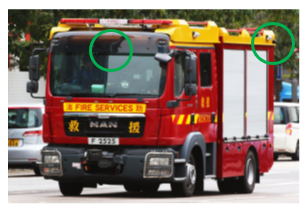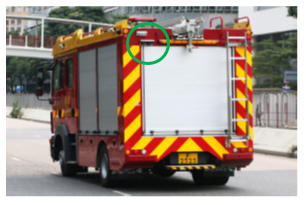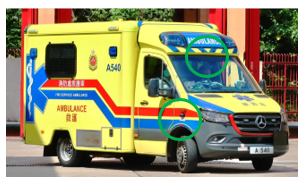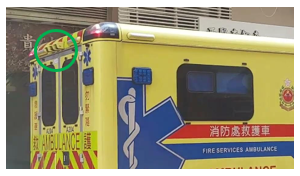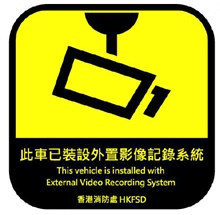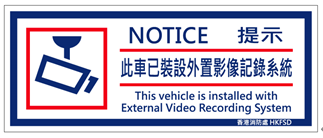The Fire Services Department (FSD) installed the Driving Video Recording System (DVRS) on selected fire appliances and ambulances in 2014 and 2016, respectively under a trial scheme. In view of the satisfactory outcome, the FSD has since continued to install the DVRS on various types of fire appliances and ambulances.
Each DVRS comes with six cameras - two positioned at the front, two at the rear, and one on each side of the vehicle (see Annex 1). This camera coverage helps to reduce blind spots and enhance driving safety. Besides, in the event of a traffic incident, the recorded video footage is useful to the Police and FSD in investigating the incident’s cause. Based on the identified cause, the FSD may also develop specific driver training for its personnel to improve their driving skills and responsiveness. Where the response to an emergency call has been delayed due to the failure of other road users to give way to a fire appliance or an ambulance en route to the incident scene, the footage may be used as evidence to support police investigations.
The DVRS captures images outside the fire appliance and ambulance only, and has no audio recording function. Where a fire appliance and ambulance installed with a DVRS is involved in a traffic incident, the FSD will retrieve and retain the relevant video footage for the purpose of investigation and analysis. Once the investigation and legal proceedings are complete, all such data will be destroyed. If the video footage is found to be suitable as driver training material, it will be retained after the removal of all personal data.
The FSD has consulted the Department of Justice and the Office of the Privacy Commissioner for Personal Data, Hong Kong on the use of the DVRS on fire appliances and ambulances to confirm compliance with relevant legislation. Additionally, a mechanism has been set up with guidelines formulated to ensure the proper storage and disposal of the video data. Prominent signs are displayed on all fire appliances and ambulances installed with a DVRS to enable easy identification by road users (see Annex 2).
Annex 1
Annex 2

